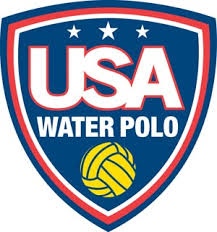
The American water polo player has relatively few options about what to do with his spare time. Unlike in Europe, North America has no professional water polo league. The American who wants to play water polo, generally without option, has to be a student.
The earliest a player will pick up the sport is in private water polo clubs. Although rare, some kids will begin playing at 10 or 12 years old. Clubs like Socal Water Polo, Newport Water Polo, and SET run younger teams in the Southern California Area. Similar clubs run younger youth teams in the Eastern Seaboard and in Northern California – but even at this young, pre-high-school age, the prevalent question for coaches, players, and spectators to ask is “What high-school are they going to?”. And this is because water polo in the United States is based around the education system more than anything else.
The majority of youth begin to play water polo when they enter high-school. It seems fair to say (and is most certainly the case with me) that a water polo player’s identity is centered around his high-school. Even linguistically, the club season is also called the “off-season” and takes place in the spring and summer. The fall high-school season is set and unmovable, and the club season has sprung up to fill in the cracks, giving high-school athletes a place and time to train outside of their seasons. Club play is generally regarded as extra-curricular (although also usually a much higher caliber of play). In any case, it would be a rarity to find a non-student in the 18u bracket.

For many, high-school is the last they will ever play water polo. However for the more talented players, the next logical step to continuing their water polo careers again lies parallel to the education system: in the Nation’s Universities and Colleges. For others, the link between education and water polo is so intertwined that instead of using education as a way to play water polo, they use athletic scholarships in water polo as a way to pay for an education. This also plays a pivotal role in forming the Collegiate Leagues. There are 3 Divisions of American universities, each defined by their ability to recruit players. Regulation of these titles is the responsibility of the National Collegiate Athletic Association (NCAA).
Division I – The largest schools who have the ability to provide scholarships (payment to athletes in the form of paid tuition) and to modify acceptance standards for athletes
Division II – Often very large schools who have been granted a moderate license to provide scholarships by NCAA.
Division III – Schools that are often much smaller and cannot offer athletic scholarships
The Division system lends an emphasis to the modus operandi of the schools – Division II and III schools tend to emphasize a “school first” mentality. Conversely, Div. I water polo is the closest resemblance to a professional league in the United States. However all divisions have a chance to compete with one another to win the National title.
Teams are divided into conferences, the most notable of the Div. I Conferences being the Mountain Pacific Sports Federation (MPSF) which has teams like UCLA, USC, Cal Berkeley, Stanford, Pepperdine, and the University of the Pacific, and has won every NCAA title since 1992. Other Conferences are the Collegiate Water Polo Association (CWPA) on the East-Coast, the Western Water Polo Association (WWPA) and Southern California Intercollegiate Athletic Conference (SCIAC). Automatic qualification for the NCAA tournament is given to the conference champions, with 2 more teams selected at large by the NCAA.

However NCAA and Div. I water polo cannot function as a truly professional league because of limitations set by the NCAA. There is only a 4-year eligibility, payment must be in the form of education services, and academic eligibility must be maintained. That is not to say that these things are bad- they are good rules set for a Collegiate league- It is only that NCAA water polo can not and should not function as the most professional league in the states.
The intimate bond between education and water polo has necessitated that after graduate studies, most water polo careers die. And during these years players are never really given the opportunity to play within a wider spectrum of ages. Throughout the school system they are limited to playing on teams with players only mere years apart in age. There are Master’s Leagues in the United States, and these are leagues without age- limits, but they more aptly resemble pick-up games than a more serious league system. The only way for an American post-grad to seriously pursue water polo is to move abroad.
By Jarrod Gaud

